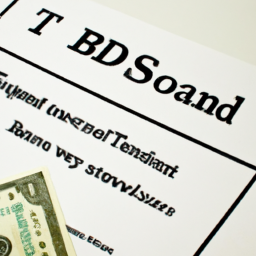Investing in US Treasury bonds can be a great way to diversify your portfolio and earn a low-risk return on your investment. In this article, we will explore the different ways to invest in US Treasury bonds, the benefits of investing in bonds, and some tips for getting started.
First, it's important to understand the basics of US Treasury bonds. These are debt securities issued by the US government to finance its operations and pay off existing debt. Treasury bonds come in different maturities, ranging from one month to 30 years, and offer varying interest rates based on the length of the maturity.
There are two common ways to buy individual Treasury securities: From TreasuryDirect, the official U.S. Department of the Treasury website for managing US government bonds, or through a brokerage firm. TreasuryDirect allows investors to purchase Treasury bills, notes, bonds, and inflation-protected securities directly from the government at no cost.
However, buying individual bonds can be challenging for smaller investors due to high minimum investment requirements and limited availability. This is where bond funds come in. Bond funds pool investors' money to buy a diversified portfolio of bonds, making it easier for individual investors to get exposure to the bond market.
Bond funds have some distinct advantages over holding individual bonds. They offer greater diversification, professional management, and lower transaction costs. Bond funds also come in different varieties, including government bond funds, corporate bond funds, and municipal bond funds.
NaviFI's machine learning platform allows smaller investors to enter the US Treasury bonds market, which is extremely closed off, with as little as $100. The platform uses artificial intelligence to analyze data on the bond market and recommend investment options to users.
For fixed-income earners, bonds can be a prudent investment option. When you invest in bonds, you are basically lending money to the government or a company in exchange for regular interest payments and the return of your principal at maturity. This makes bonds a good option for investors who want a steady stream of income and are less concerned with capital appreciation.
U.S. Treasury bonds are an excellent source of low-risk interest income for investors. Investors can hold Treasury bonds to maturity to guarantee a fixed rate of return, or sell them on the secondary market to take advantage of changes in interest rates. Like all investments, Treasury bonds come with some risk, including the risk of default, inflation, and changes in interest rates.
CNBC Select's resident financial advisor gives you a crash course in bonds, bills, and notes. According to the advisor, Treasury bills, or T-bills, are short-term debt obligations backed by the U.S. Treasury Department, and they're a good, safe bet. T-bills have maturities ranging from a few days to 52 weeks and are sold at a discount to face value.
Basically, there are two ways to buy Treasuries: new and used. Buying from the US Treasury allows investors to purchase newly issued bonds directly from the government. Buying on the secondary market involves purchasing bonds from other investors, which can offer more flexibility and potential for higher returns.
The Federal Reserve has furiously raised interest rates throughout 2022 in an effort to rein in high inflation. Here are some of the best Treasury bond funds to consider in a rising rate environment: Vanguard Total Bond Market ETF (BND), iShares Core U.S. Aggregate Bond ETF (AGG), and Schwab U.S. Aggregate Bond ETF (SCHZ).
In conclusion, investing in US Treasury bonds can be a smart move for investors looking for low-risk income and diversification. Whether you choose to invest in individual bonds, bond funds, or use a machine learning platform like NaviFI, it's important to do your research and understand the risk and rewards of this type of investment.
